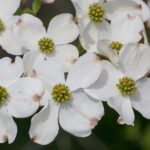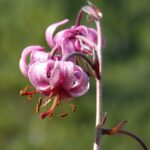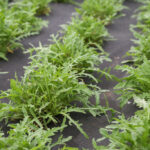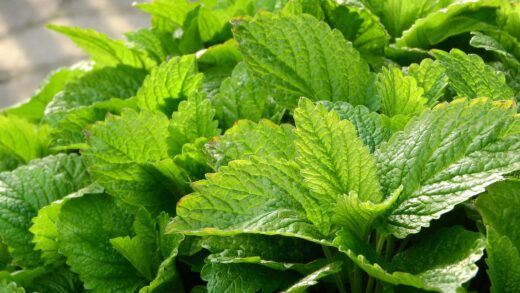Diseases and pests of the rosy primrose

While the rosy primrose is a relatively resilient and trouble-free perennial when provided with its preferred growing conditions, it is not entirely immune to the challenges posed by various pests and diseases. A proactive approach to plant health, centered on creating a suitable environment and regular monitoring, is the most effective strategy for preventing problems before they take hold. Healthy, vigorous plants grown in the correct location with proper moisture and nutrition are inherently more resistant to attacks from insects and pathogens. Understanding the potential threats allows you to recognize early warning signs and intervene swiftly and appropriately, ensuring that minor issues do not escalate into major problems that could compromise the beauty and longevity of your plants. This guide will explore the most common pests and diseases that can affect the rosy primrose and provide practical, effective management strategies.
The most frequent adversaries you are likely to encounter are slugs and snails, which are irresistibly drawn to the cool, damp conditions and tender foliage that characterize the primrose’s habitat. These mollusks can inflict considerable damage, especially on emerging leaves in the spring, leaving behind their signature ragged holes and slime trails. Their activity is most pronounced during damp weather and at night, so evening inspections can be particularly revealing. Managing these pests is often an ongoing effort, requiring a combination of cultural practices and, if necessary, targeted interventions to protect your plants from significant harm.
Fungal diseases, while not rampant, can also pose a threat, particularly when conditions are less than ideal. Issues like botrytis (grey mold) and root or crown rot are almost always linked to environmental factors such as poor air circulation, overcrowded plantings, or waterlogged soil. These diseases thrive in stagnant, overly wet conditions, highlighting the critical importance of proper site selection and soil preparation. Prevention through good garden hygiene and ensuring adequate drainage is far more effective than trying to cure an established infection, which can often be fatal to the plant.
Less common, but still worth noting, are pests like vine weevils and aphids. Vine weevil larvae can be particularly insidious, as they feed on the roots hidden beneath the soil, causing the plant to wilt and decline for no apparent reason. Aphids, on the other hand, are more visible, clustering on new growth and flower buds to suck the sap. By familiarizing yourself with the signs and symptoms of these potential problems, you can act as a vigilant guardian for your rosy primroses, safeguarding their health and ensuring they remain a vibrant highlight of your spring garden.
Common invertebrate pests
The most pervasive pests for the rosy primrose are undoubtedly slugs and snails. These gastropods thrive in the very same cool, moist, and shaded conditions that the primroses adore, making them a constant threat throughout the growing season. They use their rasping mouthparts to chew irregular holes in the tender leaves and can be especially damaging to the soft new growth that emerges in early spring. In severe cases, they can graze young plants down to the ground. Evidence of their presence is unmistakable, from the physical damage to the silvery slime trails they leave in their wake.
More articles on this topic
Managing slugs and snails requires a multi-pronged approach. Cultural controls, such as removing potential hiding places like leaf litter, stones, and weeds from around the plants, can reduce their populations. Encouraging natural predators like birds, frogs, and hedgehogs into your garden can also provide a degree of biological control. For more direct intervention, you can go on evening patrols with a flashlight to hand-pick the culprits. Barriers like copper tape around pots or crushed eggshells around plants can also be effective deterrents, while beer traps can be set to lure and drown them.
Another significant pest to be aware of is the vine weevil. The adult weevils are nocturnal and cause a characteristic notching pattern around the edges of the leaves, which is largely cosmetic. The far more serious damage is inflicted by their larvae, which are C-shaped, cream-colored grubs with brown heads that live in the soil. These grubs feed voraciously on the plant’s root system, and a heavy infestation can sever the roots entirely, causing the plant to wilt suddenly and die. The plant will often lift from the soil with no roots attached.
Controlling vine weevil larvae is best done using biological methods. Pathogenic nematodes, specifically Steinernema kraussei, can be purchased and watered into the soil in the autumn or spring when soil temperatures are appropriate. These microscopic worms seek out and parasitize the weevil larvae, killing them effectively and safely without harming other wildlife. Chemical pesticides are also available, but the nematode treatment is a highly effective and environmentally friendly alternative for managing this destructive pest. Regular monitoring of adult weevils and their leaf damage can alert you to a potential larval problem in the soil.
Fungal disease prevention
The most significant diseases affecting rosy primrose are fungal in nature, and their presence is almost invariably linked to suboptimal growing conditions. Root and crown rot, caused by various soil-borne pathogens, is the most lethal of these. This disease flourishes in soil that is heavy, compacted, and waterlogged, where the lack of oxygen stresses the plant and creates a perfect breeding ground for fungi. The primary and most effective defense against rot is, therefore, prevention through proper soil preparation. Ensuring your planting site has excellent drainage, even while remaining moist, is paramount.
More articles on this topic
Good air circulation is another critical factor in preventing fungal diseases. When rosy primroses are planted too closely together or are crowded by other perennials, the air around their foliage can become stagnant. This humid, still environment is ideal for the development of diseases like botrytis, also known as grey mold. Botrytis appears as a fuzzy, greyish-brown mold on decaying flowers, leaves, and stems, especially during prolonged periods of cool, wet weather. To mitigate this risk, provide adequate spacing between plants when you first plant them and consider thinning out surrounding vegetation if the area becomes too dense over time.
Proper watering techniques can also play a significant role in disease prevention. While the soil needs to be kept moist, the foliage should be kept as dry as possible. Avoid using overhead sprinklers, which wet the leaves and flowers for extended periods. Instead, use a soaker hose, drip irrigation, or a watering can with a long spout to apply water directly to the soil at the base of the plant. Watering in the morning is also preferable to evening watering, as it gives the plant surfaces time to dry out before temperatures drop at night.
Garden hygiene is a simple yet highly effective preventative measure. Fungal spores can overwinter on dead plant material, so it is important to clean up around your primroses, especially in the autumn. Promptly remove and destroy any leaves, stems, or flowers that show signs of disease to prevent the pathogen from spreading to healthy parts of the plant or to neighboring plants. A clean and tidy garden bed not only looks better but also significantly reduces the sources of potential fungal infections for the coming season.
Dealing with botrytis and leaf spots
Botrytis, commonly known as grey mold, is a fungal disease that can affect rosy primroses, particularly during persistently damp or humid weather. It typically appears on older or dying tissues first, such as faded flowers, before spreading to healthy leaves and stems. The disease is easily identified by the fuzzy, grey or brownish mold that covers the affected plant parts, which will eventually turn mushy and rot. If left unchecked, it can spread and cause significant damage, especially in dense, poorly ventilated plantings.
The key to managing botrytis is to improve environmental conditions and practice good sanitation. The first step upon noticing the tell-tale grey mold is to carefully remove all infected parts of the plant. Prune off affected leaves, stems, and flower stalks, making sure to cut back into healthy tissue. It is crucial to dispose of this material in the trash or burn it; do not add it to your compost pile, as this will only spread the fungal spores. After handling infected plants, clean your pruning tools with rubbing alcohol or a bleach solution to avoid transmitting the disease to other plants.
Preventing botrytis from taking hold in the first place involves improving air circulation around your plants. If your primroses are overcrowded, consider dividing and replanting them with more space in between. Pruning back overhanging or adjacent plants can also help increase airflow and allow the foliage to dry more quickly after rain or watering. As mentioned previously, always water at the base of the plant to keep the leaves and flowers as dry as possible, as the botrytis fungus requires a film of moisture to germinate and infect the plant.
Leaf spot diseases, caused by various other fungi, may also occasionally appear on primrose foliage, manifesting as brown or black spots. The management for these is very similar to that for botrytis. While generally less harmful to the overall health of the plant, heavily spotted leaves should be removed to improve the plant’s appearance and reduce the amount of fungal inoculum in the area. In most cases, leaf spots are a minor cosmetic issue, and a healthy, well-cared-for plant will not be seriously affected. Fungicidal sprays are rarely necessary for these issues in a home garden setting.
Virus and physiological disorders
While less common than fungal diseases, primroses can occasionally be affected by viral infections. Viruses are systemic pathogens, meaning they spread throughout the entire plant, and unfortunately, there is no cure for an infected plant. Symptoms can be varied and may include mottling or mosaic patterns of light green or yellow on the leaves, stunted or distorted growth, and streaks of discoloration on the flower petals. Viruses are often spread from plant to plant by sap-sucking insects like aphids, or on contaminated tools.
If you suspect a plant is infected with a virus, it is crucial to act decisively to prevent it from spreading to other susceptible plants in your garden. The only effective course of action is to remove the entire plant, including its root system, and destroy it. Do not compost the plant material. Because insects like aphids are primary vectors for spreading viruses, controlling their populations can be an important preventative measure. Inspect your plants regularly for aphids and manage any infestations promptly.
Physiological disorders are problems caused not by a pest or pathogen, but by an environmental or cultural issue. For rosy primrose, the most common physiological disorder is leaf scorch. This manifests as brown, dry, and crispy edges on the leaves and is a direct result of the plant not getting enough water, being exposed to too much direct sun, or a combination of both. It is a sign of water stress, where the plant is losing moisture through its leaves faster than its roots can absorb it from the soil.
To remedy leaf scorch, you must address the underlying environmental cause. If the plant is in a location that receives hot afternoon sun, providing some form of shade or transplanting it to a more suitable, shadier spot may be necessary. Most often, however, it is a sign of insufficient soil moisture. Increase the frequency and depth of your watering, especially during hot and dry periods. Applying a thick layer of organic mulch around the plant can also help significantly by keeping the soil cooler and retaining moisture for longer, thus preventing the conditions that lead to scorch.



















